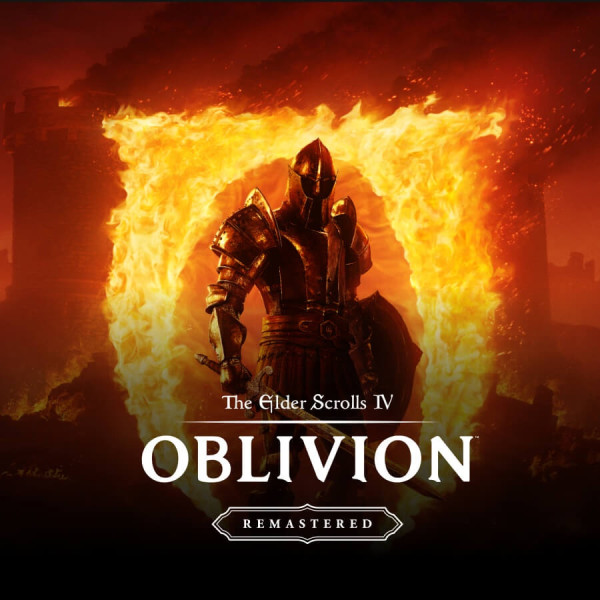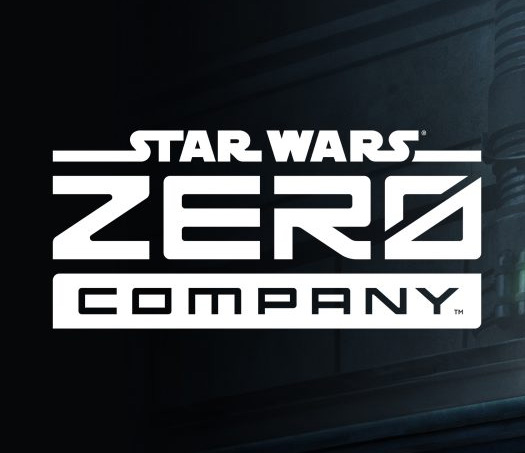NVIDIA GeForce 8 – ponovo na vrhu
Datum objave 08.12.2006 - Denis Arunović
Zaključak (conclusion)
Nema sumnje da je NVIDIA sa serijom GeForce 8 napravila izvrstan posao. S novim GPU-om ispravljeni su svi nedostatci koji su bili prisutni na karticama starije generacije, dok je istovremeno implementirana puna podršku za novi Microsoftov 3D API zajedno s moćnom i fleksibilnom arhitekturom čiji puni potencijal još relativno dugo vremena neće biti iskorišten. Unatoč arhitekturi koja je usmjerena na nadolazeće aplikacije, GeForce 8800 GTX i u postojećim naslovima ima performanse bez premca. Dakako, nije sve u performansama, ali ovu je lekciju NVIDIA jako dobro naučila ponudivši s GeForceom 8 kvalitetu slike kojoj ne može konkurirati niti jedna druga kartica na tržištu.
Visoke performanse, kvaliteta slike i napredna arhitektura donekle su zasjenjeni veličinom i potrošnjom kartice, no to su problemi koje NVIDIA praktički nije mogla izbjeći. Još jedna pozitivna stvar u cijeloj priči je to što je hlađenje ponovo izvrsno implementirano, pa kartica unatoč visokoj potrošnji nije niti bučna, a niti previše zagrijana. U prilog hlađenju i mogućnostima čipa govori i činjenica da smo i ovaj najsnažniji model uspjeli prilično solidno overclockati bez uporabe dodatnog hlađenja.
Ako vam je model GTX preskup (što nije ništa čudno), alternativa je kupovina modela GeForce 8800 GTS koji možemo nazvati mini verzijom modela GTX. Kartica je manja, manje energetski zahtjevna i jeftinija te nudi sve mogućnosti modela GTX uz nešto niže performanse. Premda se ne može mjeriti s modelom GTX, GTS nudi jednake ili bolje performanse od najjačih kartica prethodne generacije, bilo da je riječ o GeForceovima ili Radeonima. Ako ste fan overclockanja, model GTS je čak bolji izbor nego punokrvni GTX budući da smo obje testirane retail kartice, modele MSI-a i BFG-a, uspjeli overclockati na taktove koji su viši od onih na kojima radi referetni GeForce 8800 GTX. Čak niti na ovako visokim taktovima GTS ipak ne doseže performanse GTX-a budući da GPU ne raspolaže tolikim brojem stream procesora, a i memorijska sabirnica nije toliko široka kao na najsnažnijem modelu. No za time ne treba žaliti budući da GeForce 8800 GTS i ovako nudi jako puno.
Što se pak tiče konkretnog izbora kartice, sa sigurnošću vam možemo reći da nećete pogriješiti s odabirom kartice bilo kojeg branda. Sve one izlaze iz iste tvornice, a razlikuju se isključivo prema naljepnici na hladnjaku i setu opreme koja se isporučuje s karticom. Performanse, mogućnosti i overclockeri potencijal su kod svih kartica jednaki.
Na kraju, ostaje nam nadati se da će se uskoro pojaviti naslovi kompatibilni s DirectX-om 10 kako bi mogli isprobati sve mogućnosti koje nudi GeForce 8 serija. Pretpostavljamo da će do tada i ATI odnosno AMD oglasiti sa svojim DX10 kompatibilnim GPU-om. Ruku na srce, to im ne bi trebalo biti previše teško s obzirom da ATI-jev grafički čip koji pogoni Microsoftov Xbox 360 krasi unificirana shaderska arhitektura.
Conclusion
There is no doubt that NVIDIA did an excellent job with GeForce 8 series. With new GPU NVIDIA fixed all problems which plagued older GeForce cards, at the same time introducing full compatibility with DirectX 10 API in combination with powerful and flexible architecture whose full potential will not be exploited in the near future. Altough having architecture focused on high performance in future gaming titles, GeForce 8800 GTX offers peerless performance in all existing applications. Of course, raw performance is not the sole characteristic that defines a good GFX card, but NVIDIA learned much from past mistakes. GeForce 8 thus offers picture quality which can not be rivaled by any other card on the market.
High performance and picture quality coupled with advanced architecture are somewhat shadowed by sheer physical size and energy consumption of the card. Unfortunately these problems are practicaly unavoidable. Luckily, NVIDIA dealt very well with these compromises. Altough card consumes lots of energy and dissipates large amount of heat, excellent cooling solution keeps temperature of the card on a very acceptable level and at the same time generating very small amount of noise. One practical proof of the quality of cooling (and quality of GPU itself) is the fact that we managed to push GPU and memory clocks of the reference GeForce 8800 GTX by a solid margin without using any special equipment.
If you consider GTX model too pricey (and that is no suprise), there is an alternative – GeForce 8800 GTS which is basically a mini version of GeForce 8800 GTX. GTS is smaller, less energy hungry, cheaper and offers all features of GTX model but coupled with lower performance. Altough it can not compete with its older brother, GTS offer equal or better performance in comparison to older flagship cards, GeForce or Radeon. If you fancy overclocking, GTS is even a better choice than "pureblooded" GTX. In our test we managed to push clocks of both retail GTS cards (from MSI and BFG) higher than clock offered by reference GF 8800 GTX. Note that even such higly overclocked GTS can not match the performance of GTX on reference clocks because cheaper card has less stream processors and more narrow memory bus. Truth to say, this is not an issue because GeForce 8800 GTS packs quite a punch as it is.
As for practical choice of the card or better say brand of the card, you won’t make a mistake by choosing any brand present of the market. Brand really doesn’t matter as all GeForce 8800 GTX/GTS cards are made in the same factory – only difference is sticked on the cooler and equipment shipped in the retail package. Performance, features and overclocking potential are same on all cards, regardless of brand.
In the end, only thing we have to wait for is the arrival of DirectX 10 games so we can really test all features of GeForce 8 series. Presumably at the same time ATI/AMD will also launch its own DirectX 10 compatible GPU and GeForce 8 will get a real competition on the market. Truth to say, ATI shouldn’t have too much problems with that considering the fact that Xenos GPU powering Microsoft Xbox 360 already sports unified shader architecture.
| NVIDIA GeForce 8800 GTX | |||
| Pozitivno + | Izuzetno visoke performanse, osjetno bolje od svih starijih kartica. Nova moćna i fleksibilna arhitektura kompatibilna s DirectX 10. Izvrsna kvaliteta slike zbog novi AA modova i novog AF algoritma. Podržava sve HDR + AA. Tih i vrlo efikasan hladnjak. Hardverska akceleracija HD video formata. | ||
| Negativno - | Visoka potrošnja enegrije i visoka cijena. Izuzetno velike dimenzije. Driveri su mogli biti bolje riješeni. | ||
| Ocjena |
|
||
| Ustupili | NVIDIA | ||

| BFG GeForce 8800 GTS | |||
| Pozitivno + | Visoke performanse - jednake ili bolje u odnosu na najsnažnije kartice stare generacije. Visoka kvaliteta prikaza zbog novih AA i AF algoritama. Izvrstan hladnjak. Zgodan bundle s majcom. Izvrstan overclocker. | ||
| Negativno - | Visoka potrošnja, driveri su mogli biti bolje riješeni | ||
| Ocjena |
|
||
| Ustupili | New Technology Hrvatska, tel.: 01/6065-820 | ||

| MSI GeForce 8800 GTS | |||
| Pozitivno + | Visoke performanse - jednake ili bolje u odnosu na najsnažnije kartice stare generacije. Visoka kvaliteta prikaza zbog novih AA i AF algoritama. Izvrstan hladnjak. Izvrstan overclocker. | ||
| Negativno - | Visoka potrošnja, driveri su mogli biti bolje riješeni | ||
| Ocjena |
|
||
| Ustupili | MSI | ||

Forum
Objavljeno prije 1 sat
Što trenutno igrate?Objavljeno prije 1 sat
AutomobiliObjavljeno prije 1 sat
Serije - dojmovi, komentari i preporukeObjavljeno prije 2 sata
Linux OS - info, how-to, pitanja, novosti, savjeti, problemi...Objavljeno prije 3 sata
Privatnost i sigurnost podataka i korisnikaNovosti
Procurile su prve slike Elder Scrolls 4: Oblivion Remastera
Nakon godina glasina, procurjelih informacija i nagađanja, napokon imamo potvrdu da je remake igre Oblivion na putu. Korisnik u/Taurnil je primijetio da je Virtuos Games slučajno postavio niz screenshotova na svoju web-stranicu, dajući prvi... Pročitaj više
Nova piratska igra u svemiru
Dok publika već sada povlači usporedbe s Disneyevim animiranim filmom Treasure Planet, razvojni tim Ticking Clock Games predstavio je novi pogled na igrivost i priču svoje nadolazeće svemirske piratske igre, Void Sails. Igra obećava iskustv... Pročitaj više
Glasine o novoj Prototype igri
Nova Prototype igra navodno je u razvoju. Prema korisniku na Redditu imena Bigbyy, dobio je informacije o novoj igri iz serijala kao dio nedavne sesije fokus grupe. Korisnik tvrdi da će se Alex Mercer vratiti kao protagonist. Igrivost će na... Pročitaj više
Najavljena nova taktička Star Wars igra
(izvor slika) Star Wars: Zero Company je službeni naziv dugo očekivane igre na poteze od Respawn Entertainmenta i Bit Reactora, koja igračima daje kontrolu nad vodom tijekom Klonskih ratova. Najavljeno je da će sve biti predstavljeno na pan... Pročitaj više
Što je novo u Midjourney V7 nakon godinu dana pauze?
Midjourney je službeno lansirao svoj najnoviji model za generiranje slika, Midjourney V7. Ovaj model nije samo nadogradnja prethodne generacije tehnologije, već i još jedno remek-djelo duboke kultivacije tima Midjourney u području umjetne i... Pročitaj više
Sve novosti




